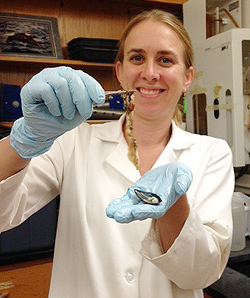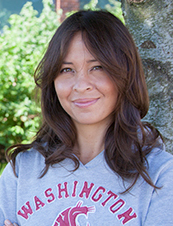Dazzling fluorescent rocks on display

“There’s always lots of oohing and aahing when kids see them and, as you can see, they get as close as they possibly can,” said WSU geologist Kurt Wilkie. He’s one of several scientists who give tours of the S. Elroy McCaw Fluorescent Mineral Display located on campus – and who sometimes must clean the viewing window of so many small hand and nose prints.
On display behind the glass, 150 rocks glow in brilliant yellows, purples, oranges and greens. Set against a dark background, they make up a nocturnal garden that captivates adult visitors as well, said Wilkie.
Read more in All that glitters.


